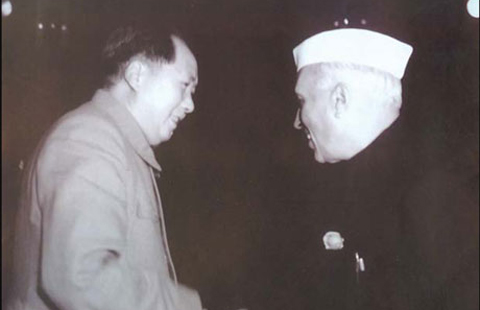Chinese monk opened history's eyes to India
Updated: 2015-05-15 07:30
By Azdak (China Daily)
Comments Print Mail Large Medium Small
A major reference point in Indian history is 630 AD. That is the year Xuanzang reached Adinapur (present-day Jalalabad, Afghanistan). Incidentally, Adinapur was part of the ancient Indian kingdom of Gandhara (present-day Kabul) until a century before the arrival of Xuanzang.
Without Xuangzang's documentation of his journey and stay in India, Indian history would have had to wait for its first written reference point. It helped historians chart not only the classical and late medieval periods but also the ancient period of Indian history. This, perhaps, is the greatest contribution of Xuanzang to Indian history, which, until his visit to the court of Emperor Harshavardhana (or Harsha) in Kannauj (in modern-day Uttar Pradesh province), was scattered in edicts, seals, parchments and oral tales.
Although Banabhatta, Harsha's court poet, wrote Harshacarita (The Deeds of Harsha), recounting the emperor's reign, Xuanzang's account gives vivid details of life in India under Harsha's rule. It is from Xuanzang's account that we come to know how Harsha treated the three dominant religions of the time - Hinduism, Buddhism and Jainism - and the respect he had for scholars, poets and artists.
His description of life in monasteries and the two largest universities on the Indian subcontinent and perhaps the world at that time, Taxila (now in Pakistan) and Nalanda (in India's Bihar province), is the first true documentation of scholasticism and learning in India.
For China, Xuanzang carried more than 600 volumes of Buddhist scriptures. He translated the Prajnaparamita Sutra - prajna means wisdom, paramita perfection and sutra simply the thread), though an earlier translation by Kumarajiva (Juomoluoshi) existed.
Xuanzang's work, especially in Buddhist Yogacarya (consciousness), highly influenced the Chinese practice of Buddhism, which, along with Confucianism and Taoism, helped shape Chinese society.
Of course, Faxian traveled to India two centuries earlier, but Xuanzang remains a major reference point in relations with China because of his accounts of Buddhist societies along his route. The Buddhist monk, celebrated in one of the four Chinese classics, Journey to the West, is also credited with what a large number of historians agree is the first written description of the Bamiyan Buddhas, figures carved in a mountain that were dynamited by the Taliban in Afghanistan in 2001.
Thus it wouldn't be an exaggeration to describe Xuanzang as the first and perhaps most important ambassador of Buddhism and culture from China to India, and vice-versa.
The author is a senior editor at China Daily.



